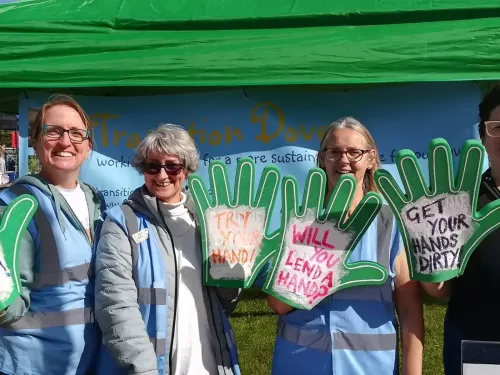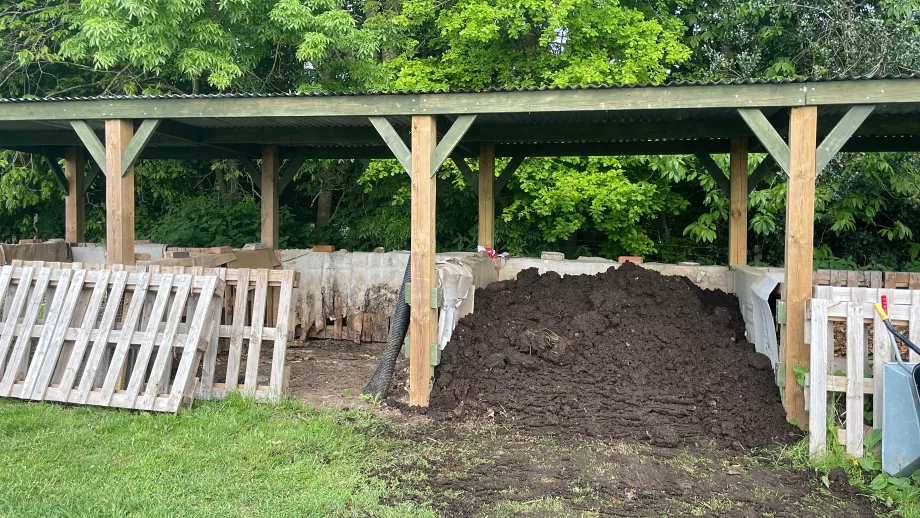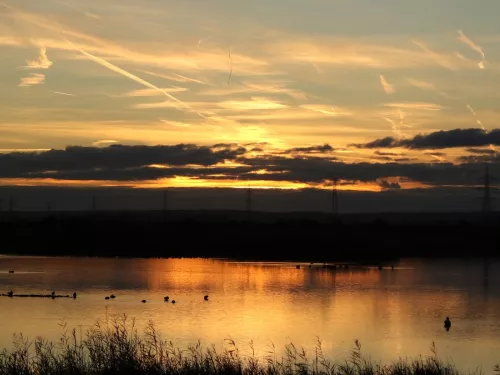
Nature Heroes - Transition Dover
Local community group Transition Dover have revived a previously neglected patch of land into a flourishing nature haven.


No Dig Bed building Lynsted Kitchen Garden
The positive impact has been nutrient rich soil with a good structure and crumb, which because it is healthy has few weeds and supports an abundance of fresh organic produce throughout the year. 60 people or more enjoy seasonal food for free, gardening together in a wonderful field setting that works with nature. Rabbits nibble the cabbages and carrots, mice steal our chillies and peas, various aphids come and go but there is plenty to go around. “Getting it right on food, could be the greatest opportunity to improve our health and wellbeing, whilst at the same time protecting the planet.” (Gunhild Stordalen, EAT Foundation)

We make our own compost recycling waste material from the garden and uncooked waste from some of our volunteer’s kitchens to create a ‘lasagne’ of carbon and nutrient rich ingredients. We also include animal manure from horses grazing on neighbouring untreated pasture and fed with hay that is both herbicide and pesticide free. A 4cm layer of our homemade compost is all that is added to the growing beds each year to replenish nutrients. In the future, we will also be using vermicast made in our compact wormery to add to our soil as well as learning more about nettle and comfrey fertilising ‘tea’. This rich in nitrogen and potassium liquid can be added to beds, particularly those growing ‘hungry’ leafy veg. We leave plenty of nettles to grow around the edge of the garden. If outside space is available, even a small compost area can bring rich rewards.

Compost Shed Lynsted Kitchen Garden
We collect and store rainwater to avoid using mains water and thus conserving water. We store water which is collected off the back of two sheds. A piece of drain pipe and as large a container (ideally with a lid) is all that is need to harvest rain water from an outside space. We would like to expand our water storage. Currently we have about 9,000 litres for half an acre but we think that triple this would see us through even a long drought period.
We are always on the look out for second-hand tanks and troughs that we can reuse. There is plenty of seasonal rain, it’s just having the containers to store it. We use a simple solar pump to move the water around and link up to soaker hoses, but you can easily just raise the tank up and use it to fill a watering can.
We have also invested in a weather station with the help of funding from MySociety. This allows us to monitor weather accurately at the local level and to measure soil moisture and temperature levels which in turn informs our watering and helps us manage our precious water stores. Free weather forecasts (Met Office App) are easy to follow and using them allows anyone to plan ahead with collecting water or managing a drought period.
We have taken further steps to conserve and manage water by building a compostable toilet, which is a waterless system that works on the process of evaporation, leaving behind only compost. It’s a brilliant reminder to volunteers and visitors alike that using drinking grade water to flush away waste requires a rethink. Using ‘grey’ water or, if possible, compostable systems to reduce water consumption is the future because water abstraction and reservoir building take their toll on natural systems, so households consuming less water is key.
When a tree falls down or when the nettles spread, we shouldn’t rush to clear or tidy. Nettles are the food plant for the caterpillars of red admiral, small tortoiseshell, painted lady and comma butterflies. As part of our biodiversity and to encourage more insects these wild areas support lots of ‘good bugs’ which then filter out on to community garden and keep on top of our pests. Ladybirds, lacewings and ground beetles spring to mind. Nettles can also be used to make great nettle ‘teas’ that can be sprayed onto plants or soil as a nature-friendly fertiliser.
Native species hedgerow planting creates a natural windbreak and shelter and offer a home for a wide range of wildlife. Saplings were kindly donated by The Woodland Trust and were planted by reception class from Lynsted and Norton Primary School along with volunteers from Lynsted Community Kitchen Garden.
Growing a wide range of plants to provide a diverse range of food plants and ‘homes’ for wildlife. We have flower beds alongside veg and fruit beds to encourage pollinators. The impact is a wonderful range of insects at the garden and the flowers really draw in visitor attention.
We want to support biodiversity further with the creation of a Wildlife Pond approx. 5x9, to provide fresh surface water in a location where there is none nearby. This will support our bees – who, like all insects, need water as well as a range of aquatic and land species.

Local community group Transition Dover have revived a previously neglected patch of land into a flourishing nature haven.

At Kent Wildlife Trust, we’ve created a team of nature heroes. Maybe not the obvious heroes working on the ground, but the heroes behind the scenes, the EDIB group!
This National Lottery Heritage Treasures Day, our Heritage Treasures person is Aimee Howe, People Engagement Officer for the Sevenoaks Greensand Commons project.